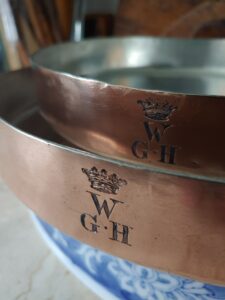
It can be said that every antique copper pan has a story to tell. Well, pour yourself some tea, because these two are a storied pair. They have mystery, intrigue, transformation, and resurrection. It’s a riches-to-rags-to-middle-class-appreciator come-from-behind kind of affair. I’m so thrilled to be the steward of their most recent incarnation, and to share their story with you, reader.
VFC says: This guest post was written and photographed by Terina W.
Like so many of you, the sudden shift to pandemic life forced a change in my habits. I found myself cooking what felt like 783 meals per week for my family in my relatively small apartment kitchen. If I was going to be cooking literally all the time, I was going to be cooking with the best tools available. So began my journey towards the great de-stressor, and truly my lifeline during some of the hardest days of the past two years: searching for bargain quality copper cookware on-line. I owe a large debt of gratitude to the resources on this very blog. I trained my eyes, made some bad buys, but also some good ones. I was drawn in by gorgeous old handles. I joined a facebook group for Copper Cookware Enthusiasts. Soon, I was able to visually scan listings and pick out quality pans at a glance. Not only was it fun, I had a knack, and my pans began to find me. As they do.
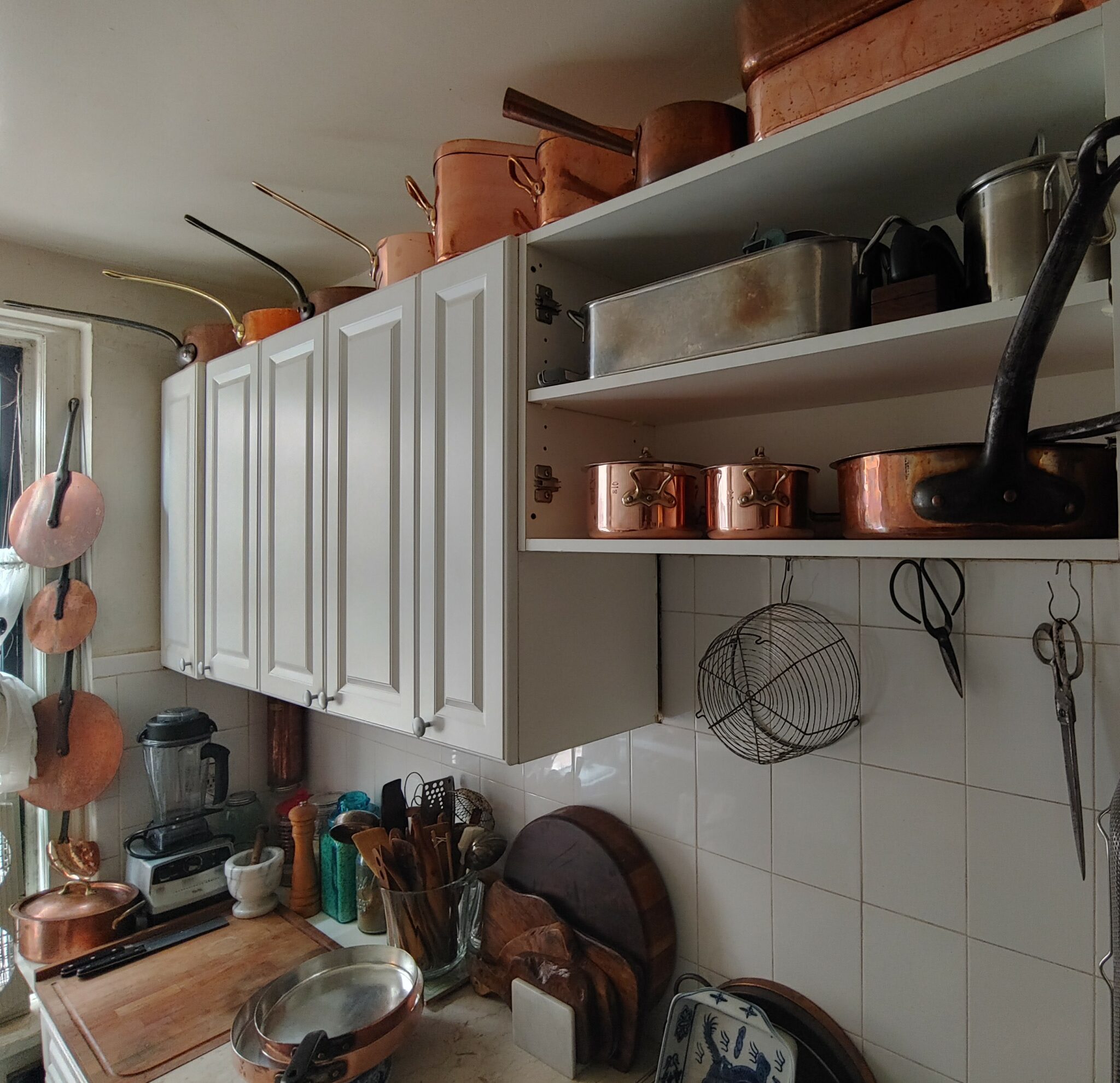
Fast forward to a chilly February night of this year. I’d pretty well finished up building my copper batterie, but, since I enjoy the hunt for well priced pieces, I’d made a practice of sharing with the copper group the good listings I would come across during my mental health break searches. During one such search, I spied a low quality photo of two pans on top of an inverted Rubbermaid storage container in Florida for $50. The hounds were alerted, as it were. I thought they looked like they had potential. In fact, to me, they looked very much like pieces by Benham & Froud that I had been coveting, but for which I was less than willing to shell out the premium they so often command. I mostly loved their handles, but, they were in FL, I was in NYC, and the seller was a non-responder to my inquiries regarding possible shipping.
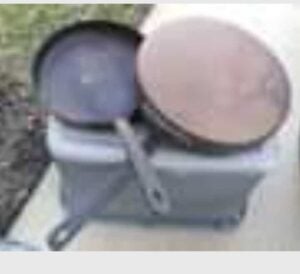
The following morning, I posted the listing in the copper group with the simple heading ‘Potential in FL,’ thinking someone local might be able to go snag them. Enter providence. A relatively new member of the group with whom I’d had positive interactions chimed in that the pans were just down the road from her, but that she wasn’t sure they were the right fit for her. I immediately felt my pulse quicken and urgently suggested that if she would go get them, I would split the pair with her. She could pick the one she wanted, and then we could ship both pans to Valerie at Southwest Hand Tinning who, I assured her, would restore them and return them to us in lovely condition. She agreed. Fun times with copper friends. I went out to play in the snow with my four year old.
When I came back in and warmed up and had a chance to check my messages, I figuratively and probably literally had to pick my jaw up off the floor. Not only were the pans indeed stamped for Benham & Froud, but, they were coronet pieces! They each bore a matching beautiful royal monogram! But they were in horrendous condition and, so I’m told, smelled quite gross.


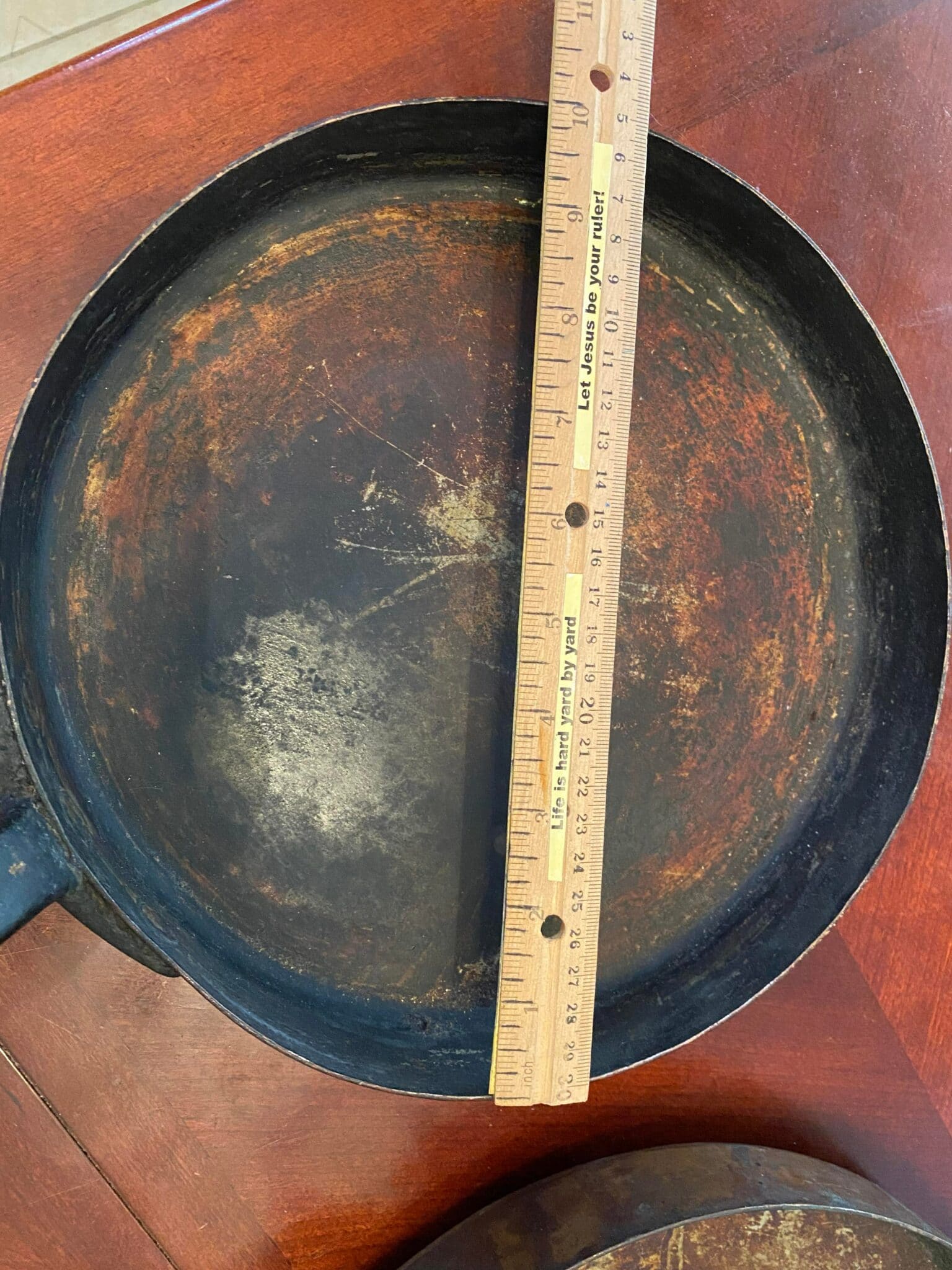
My heart sank a bit, as I knew in that moment that these pans deserved to stay together. Separating them would have been akin to separating a pair of twins. They’d made it all the way through history to that moment, together. I was not going to be the one to break the pair, and so I offered that the buyer in Florida should keep both. Remember how they were in horrendous smelly condition? She said she didn’t think she’d ever be able to cook in them and offered them both to me. Um, yes please and thank you! We came to an arrangement, I sent her the payment, and she shipped them off to Valerie at Southwest Hand Tinning on my behalf to begin their transformation.
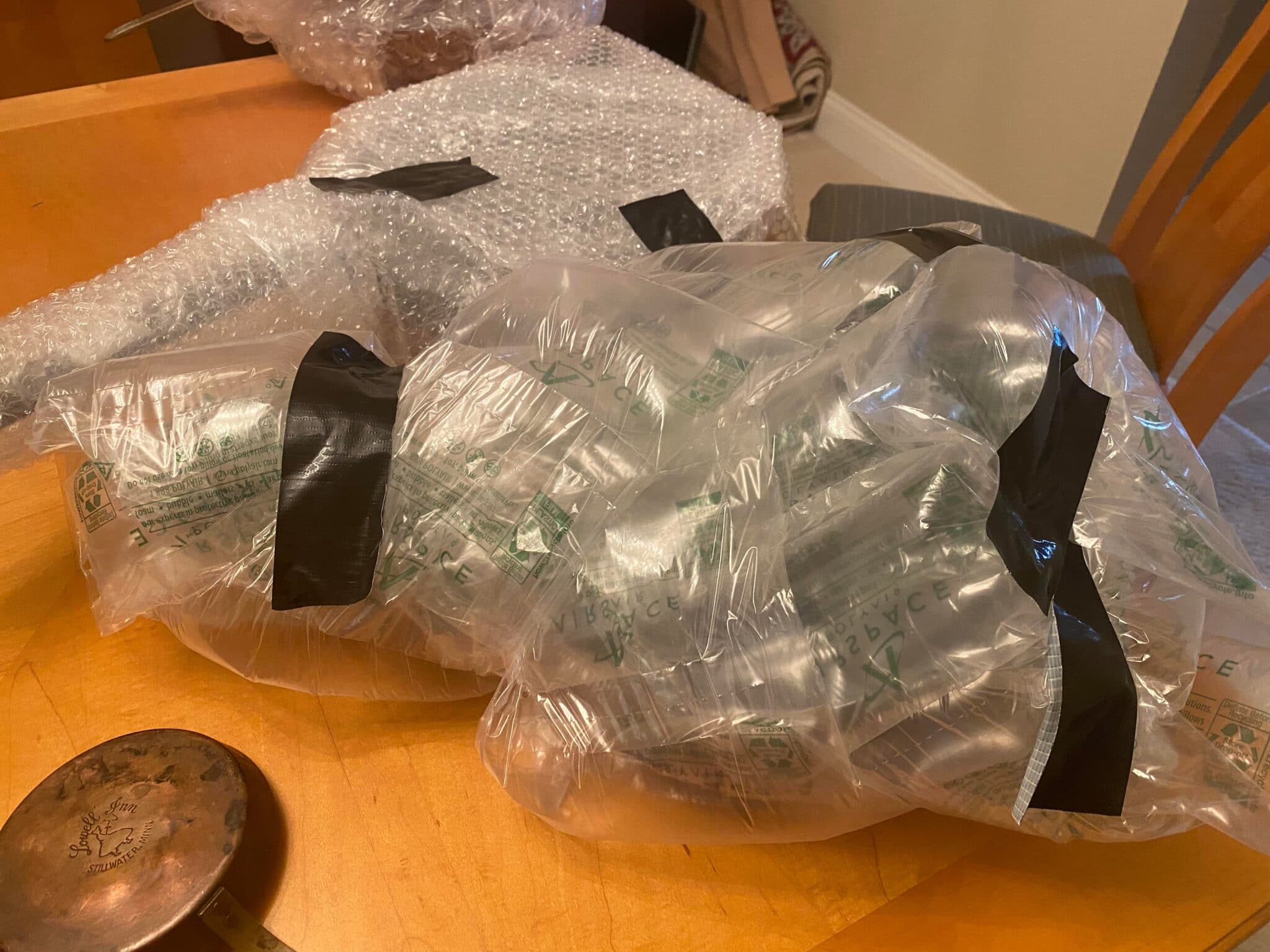
…All through the cold and restless interval, until dawn, they once more whispered in the ears…wondering what subtle powers were forever lost…and what were capable of restoration–the old inquiry: “I hope you care to be recalled to life?” And the old answer: “I can’t say.” –Charles Dickens, A Tale of Two Cities
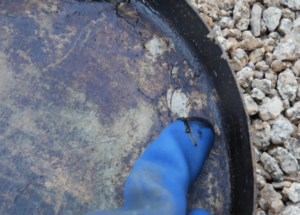
If one were unfamiliar with Valerie Smith Maguire’s work restoring antique copper pans, one could indeed be incredulous that these yucky duckies could be returned to their former glory. But having experienced her restoration skills on a prior pan, I knew they were in the best possible hands. I think we were all, pans included, super happy with the arrangements.
But now I had a mystery on my hands. Whose pans had these been? Where had they served? In what royal kitchen? How on Earth had they become so forgotten and neglected as to have been sold in such a smelly state from the back of a plastic storage bin? I may never know the story of their dark years. But I can tell you the story of their bright shining years, when they were new, and served in the kitchen of the London townhome of a man who, at his death, was said to have been the richest man in Britain.
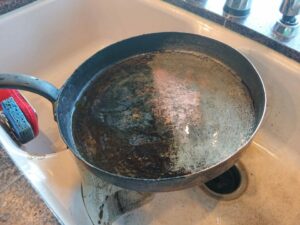
I knew the pans were likely from the second half of the 19th century, and that the striking coronet with its five visible strawberry leaves most resembled that of a Duke. I presumed that since the pans were British, it was likely a British duchy. So, I started to search for monograms of 19th century British dukes of something starting with W whose initials were possibly G. H. I didn’t have a particular system or method, I just jumped down the royal monogram rabbit hole…and got really lucky. Or maybe it was more than luck? I can’t really explain these things. Ask the duckies. I stumbled upon an image of a monogram with a Duke’s coronet and a very similar W attributed to ‘Grosvenor, Hugh Lupus, 1st Duke of Westminster’ on the website of The University of Toronto Library cataloging British Armorial Bindings. (https://armorial.library.utoronto.ca/stamp-owners/GRO002)
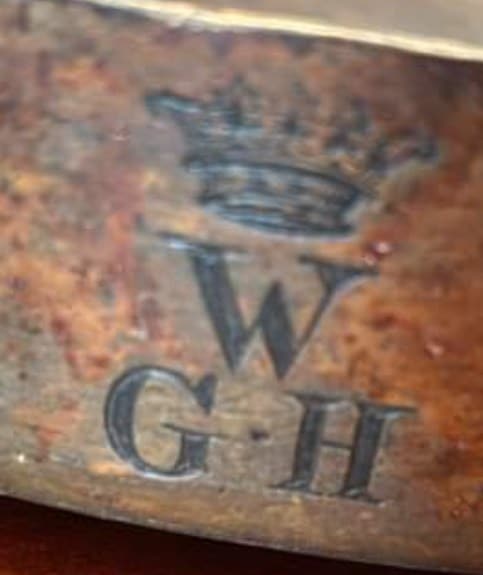
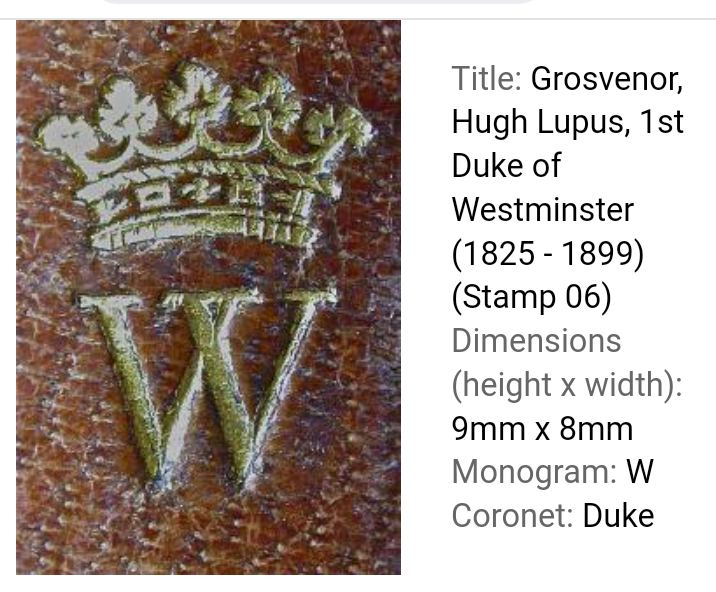
My sixth sense told me I was close, but things didn’t fully align, as his initials were actually H. G. not G. H. The only reason I found the matched coronet at all was that he was listed last name first in the library’s catalog entry, and at first, I mistakenly thought that he was a G. H. I decided to post my findings in the copper group anyway to sort of crowd source and see if anyone more experienced than I had any insights. Well, I love that group. The very astute member who’d gone to get the pans in Florida turned up a matching coronet on a copper mold attributed to the first Duke of Westminster’s Eaton residence, and its listing stated that the letters below the ‘W’ were for the location, not the person. Another member followed up that the London townhouse of the First Duke of Westminster was called ‘Grosvenor House.’ And there it was: The Duke’s coronet, W for Westminster, G. H. for his townhome in London, ‘Grosvenor House!’ https://www.british-history.ac.uk/survey-london/vol40/pt2/pp239-250
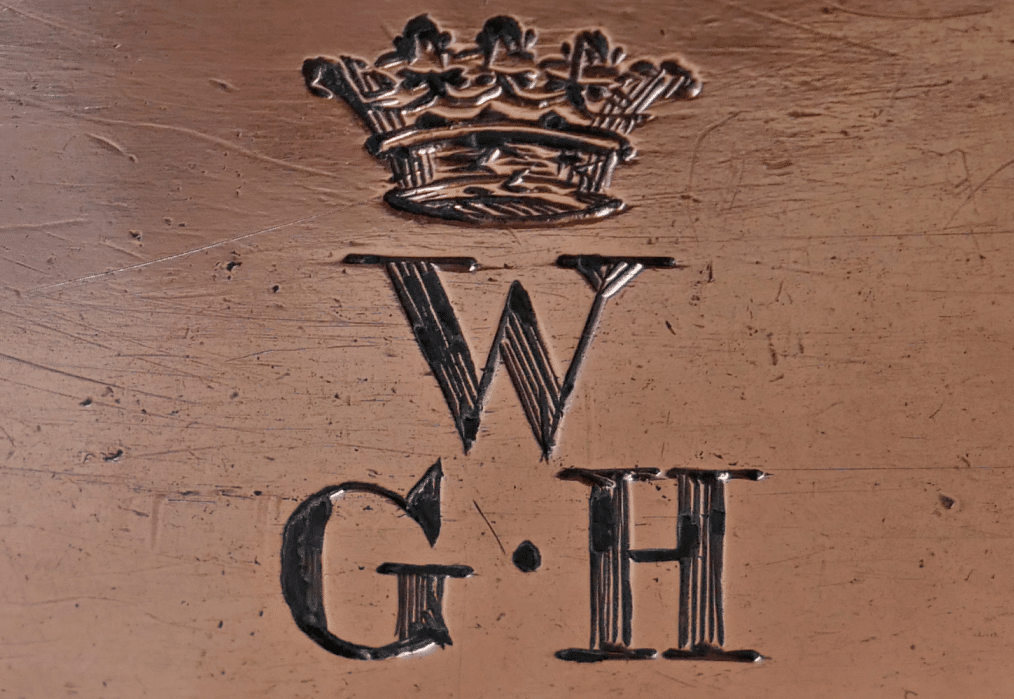
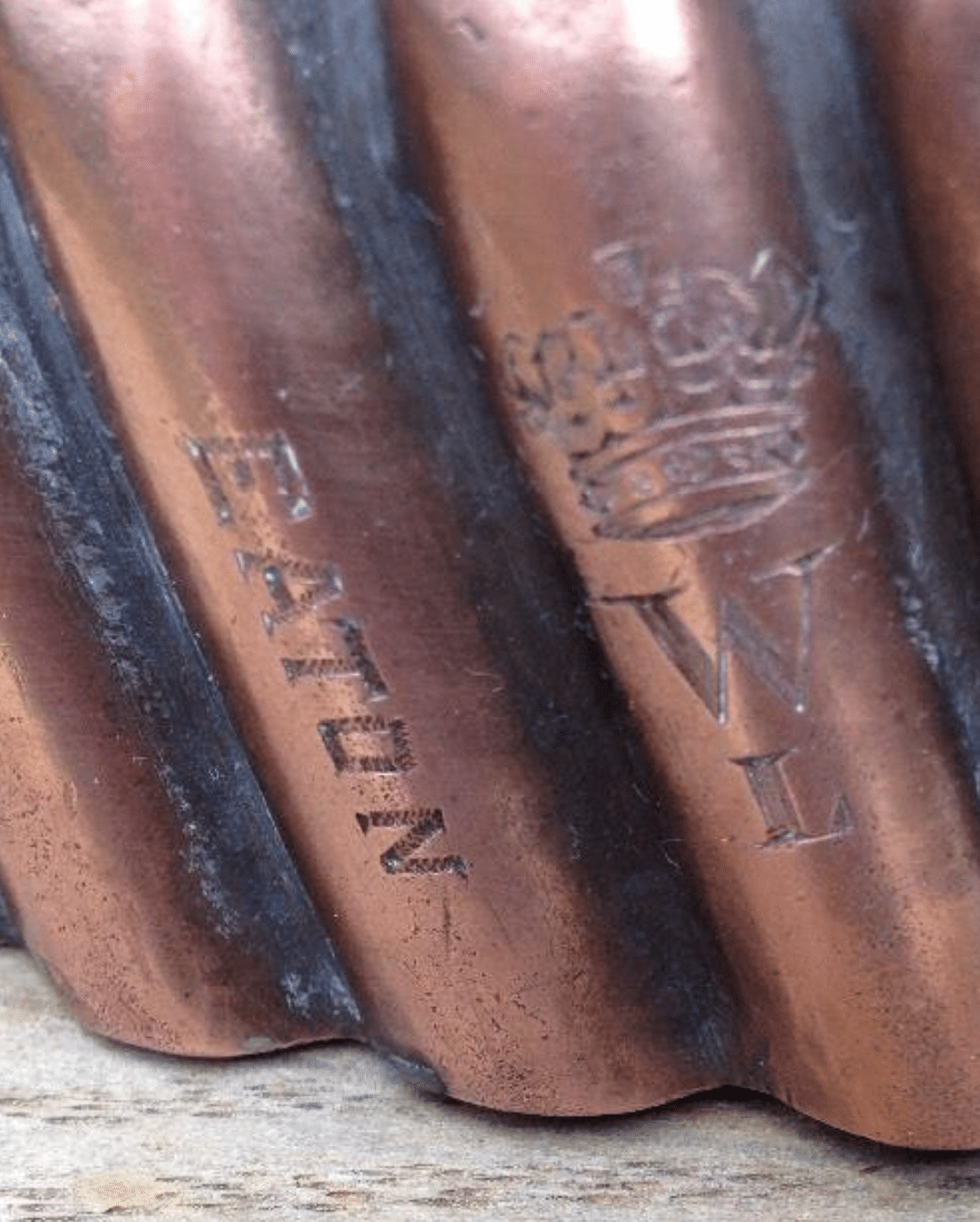
This, dear reader, was the one time home of the Duchy Duckies. My pans may very likely have prepared the food presented in these halls, at these tables.
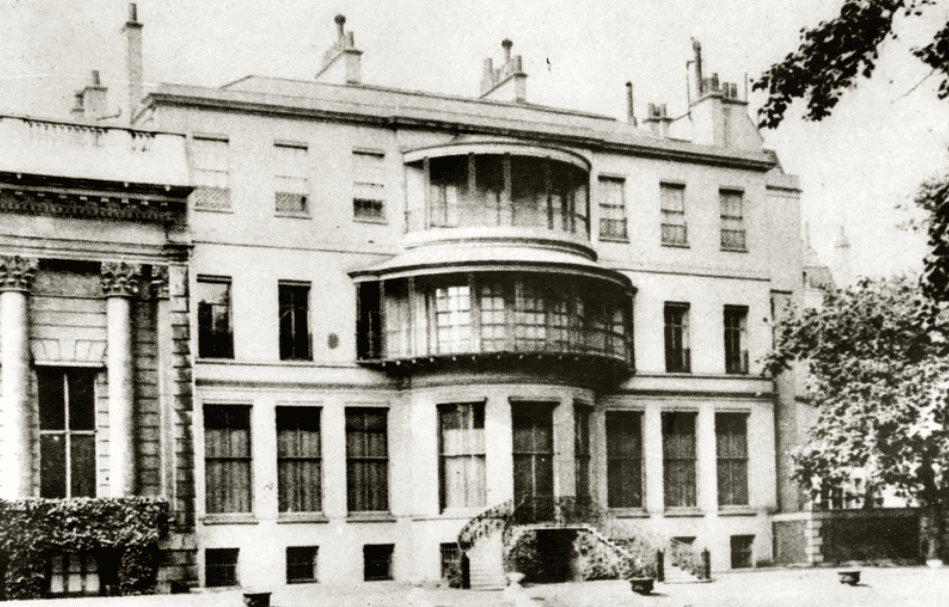
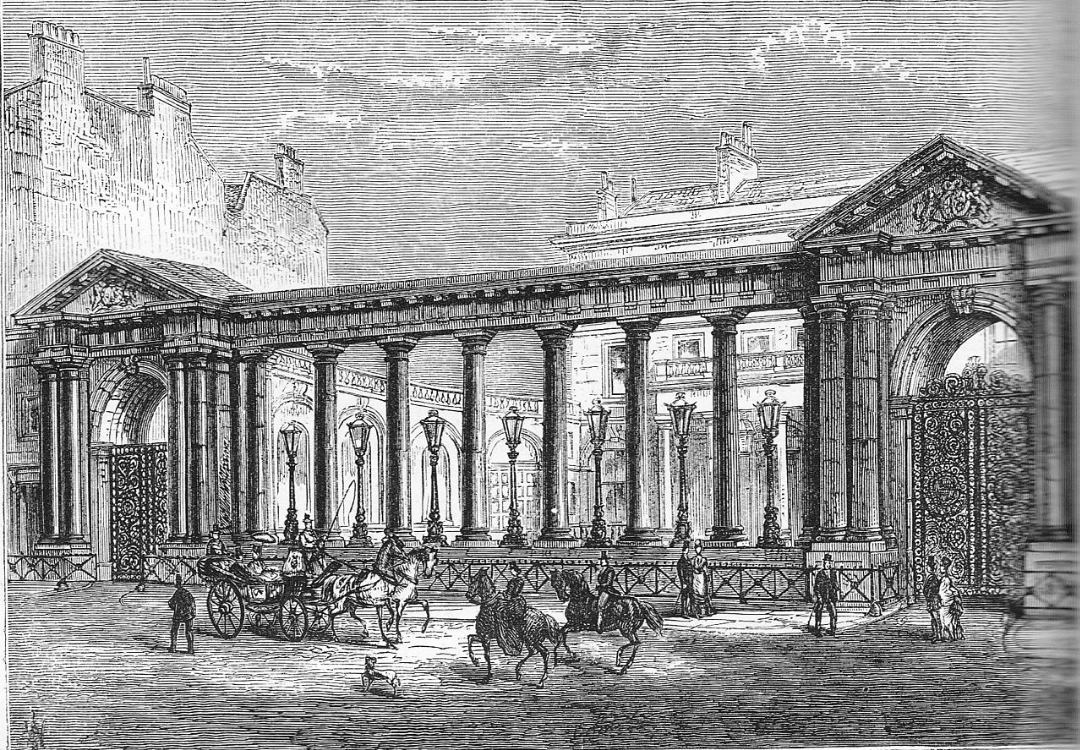
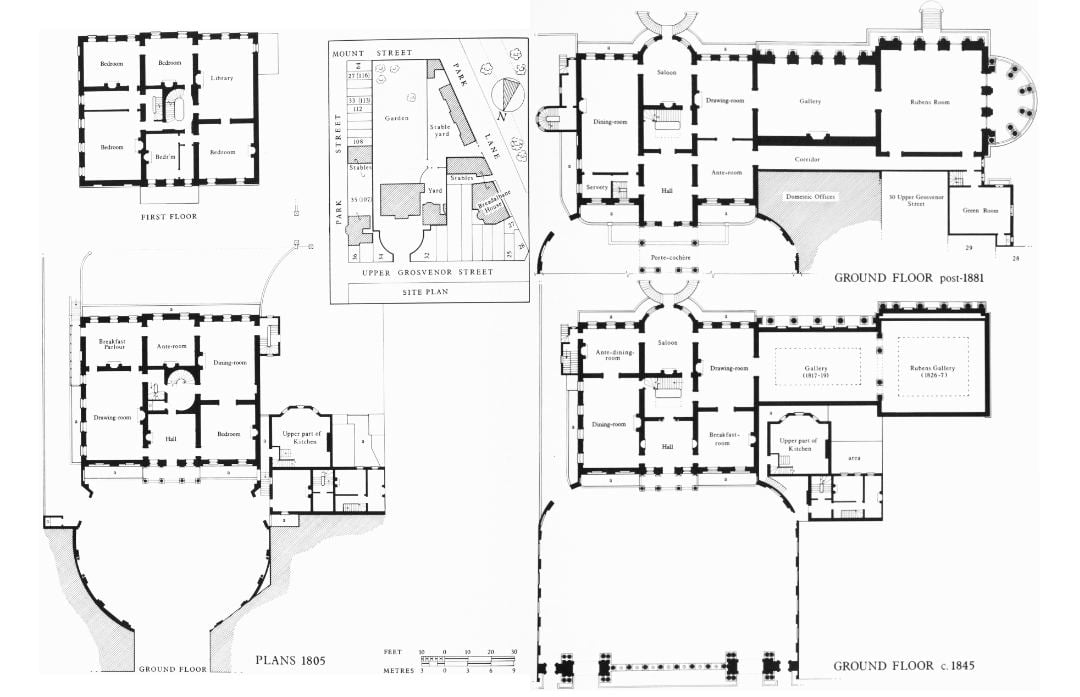
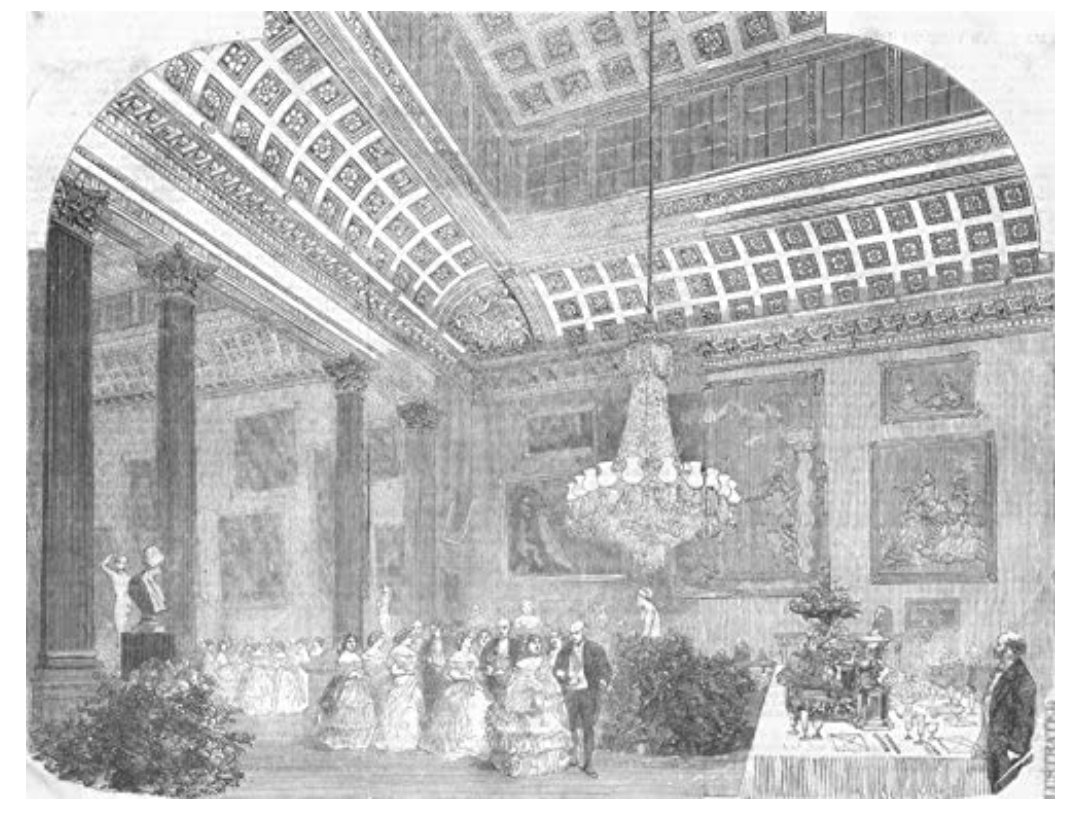
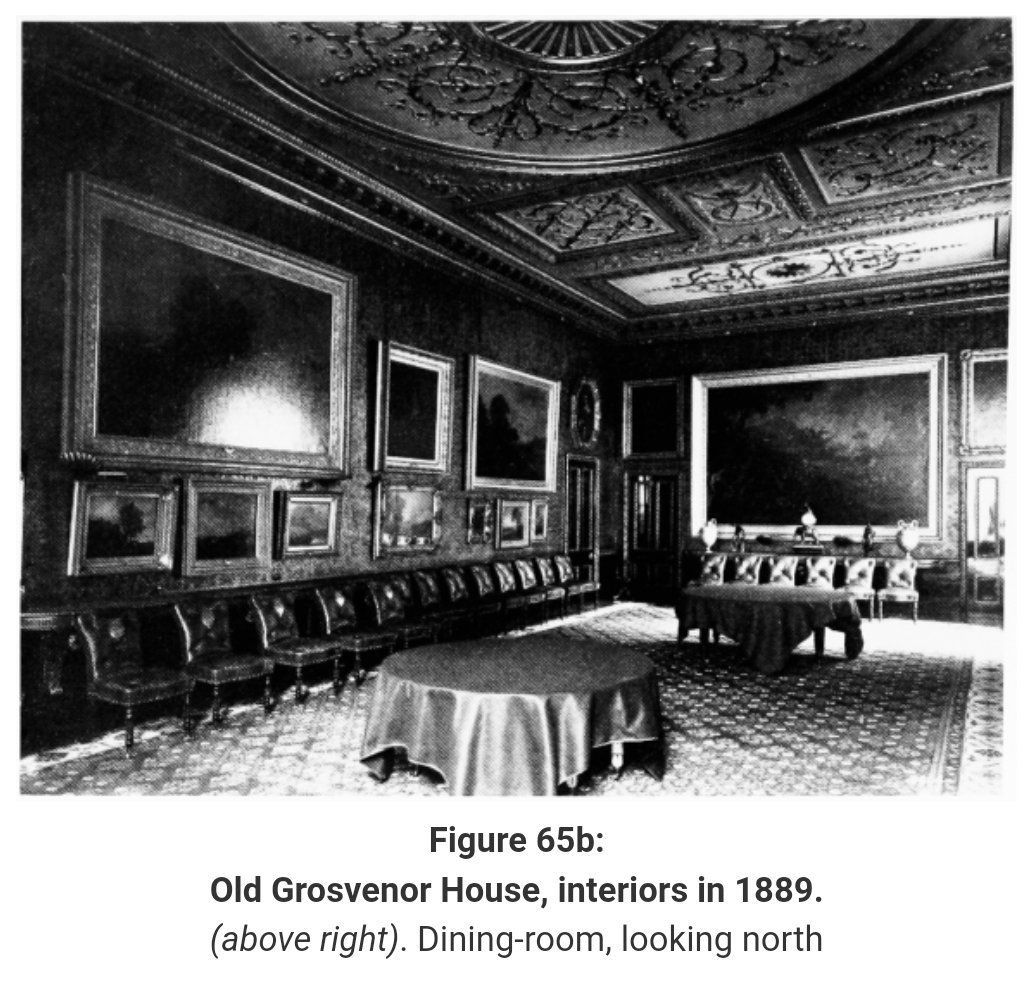
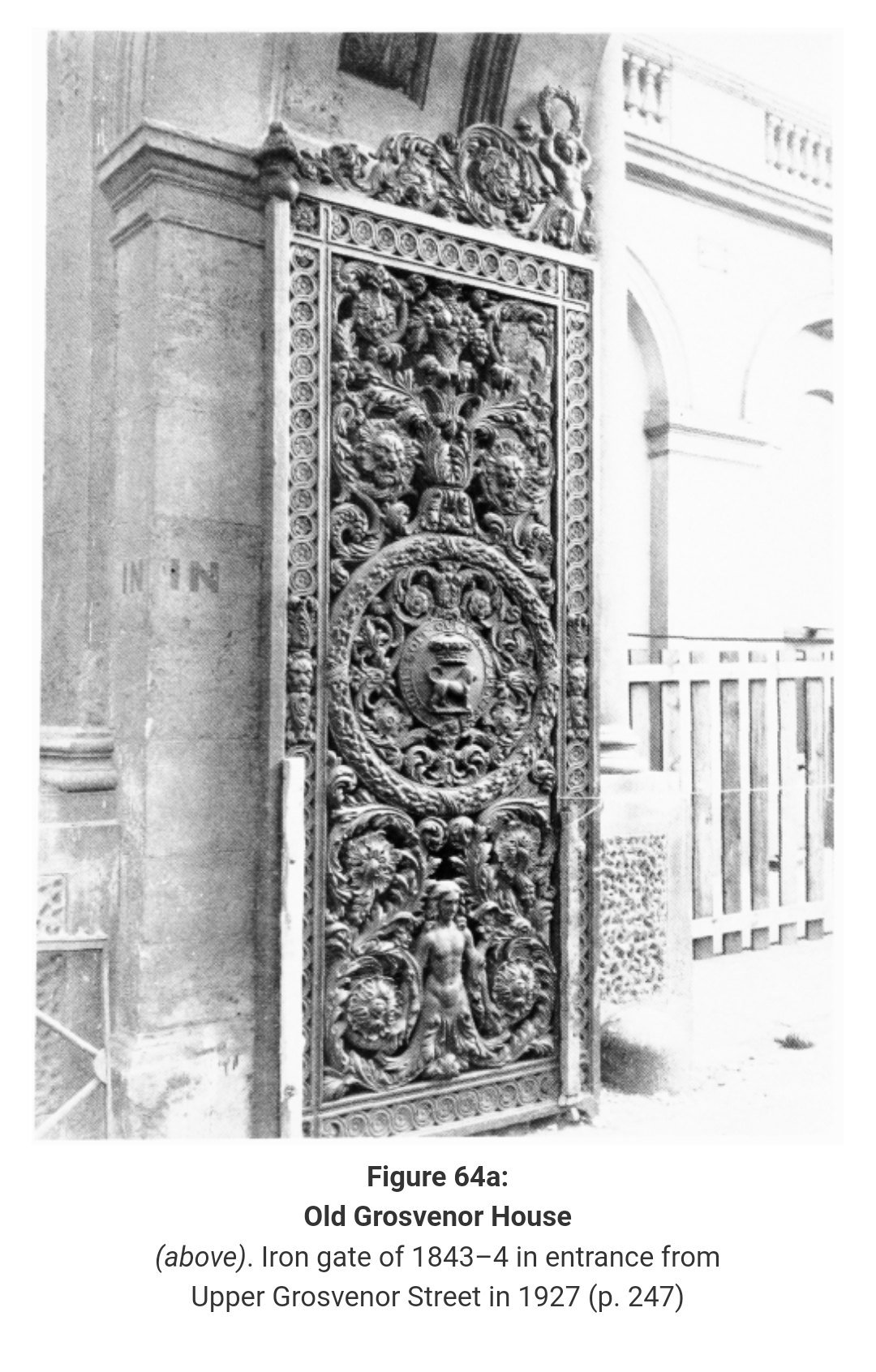
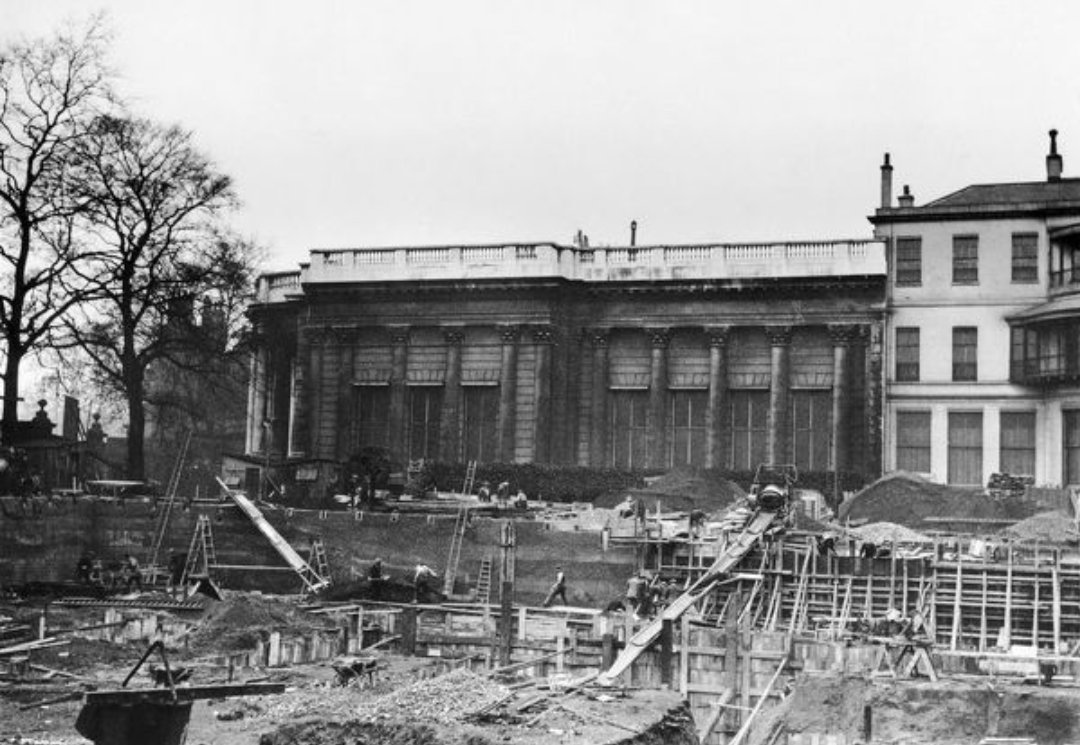
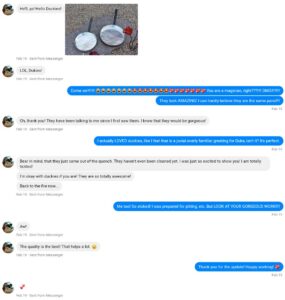
Following the demolition, or perhaps even before that, when the house was commissioned by the government during the First World War, the household items were cast out to the winds and currents of time.
I can’t say where they were for the approximately 100 year interim. Somehow, used and abused, they ended up in the US. But, they made it. Together. To Val’s workshop in Arizona, where, after some time and effort getting de-gunked, they were on their way to great again!
She’s totally a magician. Actually, it is skill and sensibility. But, how grateful are we that the Duchy Duckies are back to shiny?! Hello, Duckies, indeed!
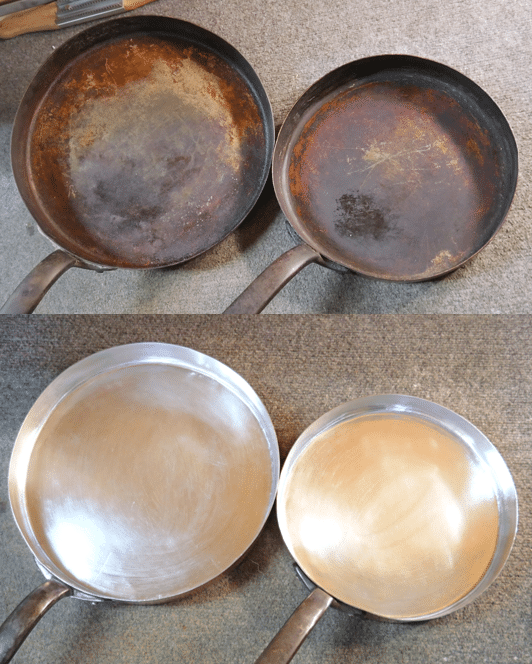
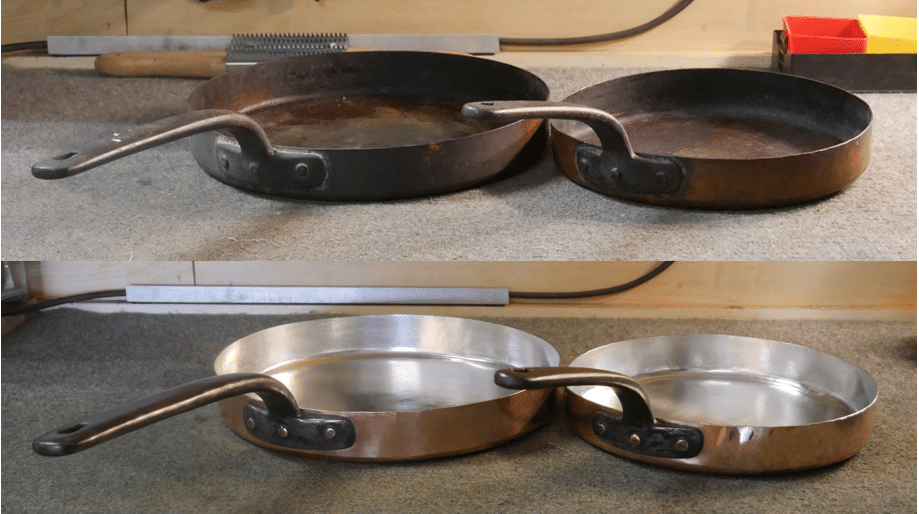
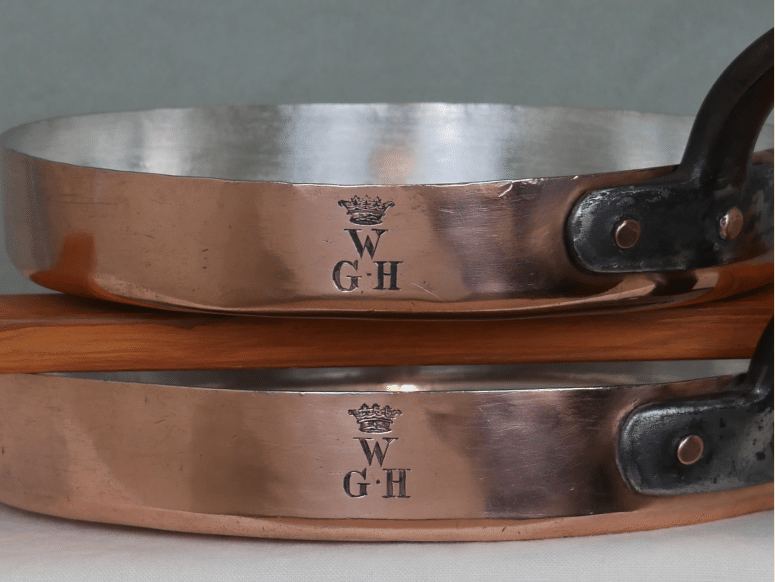
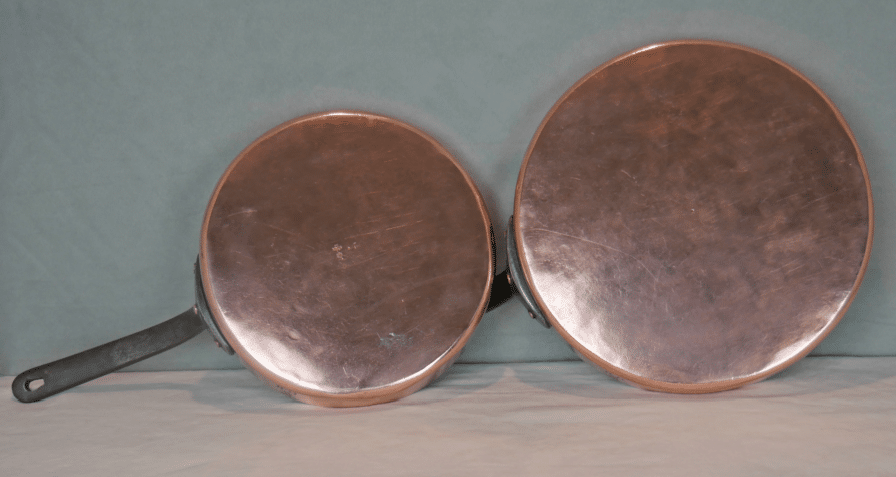

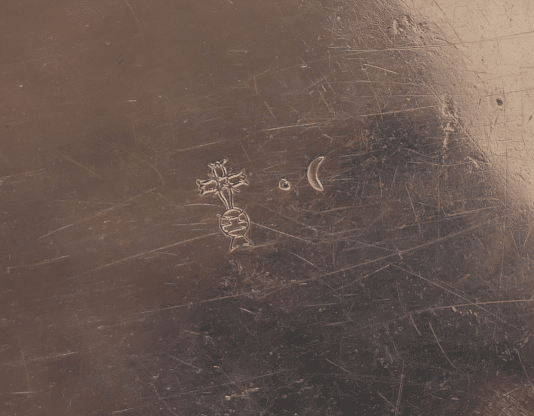
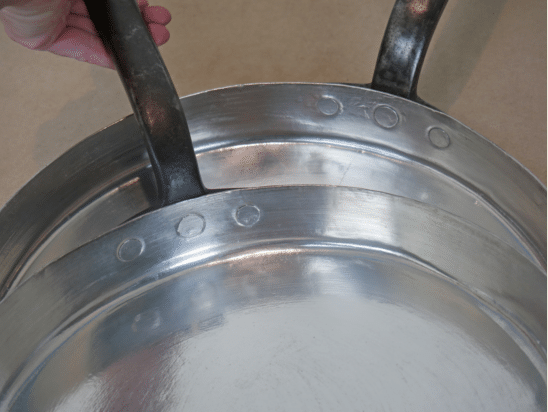
And they are back to work, too. During our journey with these pans, Val shared that her favourite application for these antique panel pans was for baking chocolate chip cookies. We both thought it would be somewhat hilarious if the first thing I made in the royal pans of the 1st Duke of Westminster was chocolate chip cookies. Let’s just say, I made sure they had a very warm welcome to their new home! Hey, it’s not a lost London palace. But, it’s not the back of a Rubbermaid either. They are restored, appreciated, fancied even, and happily turning out the most perfect chocolate chip cookies ever for the foreseeable future. Thanks for cheering them on.
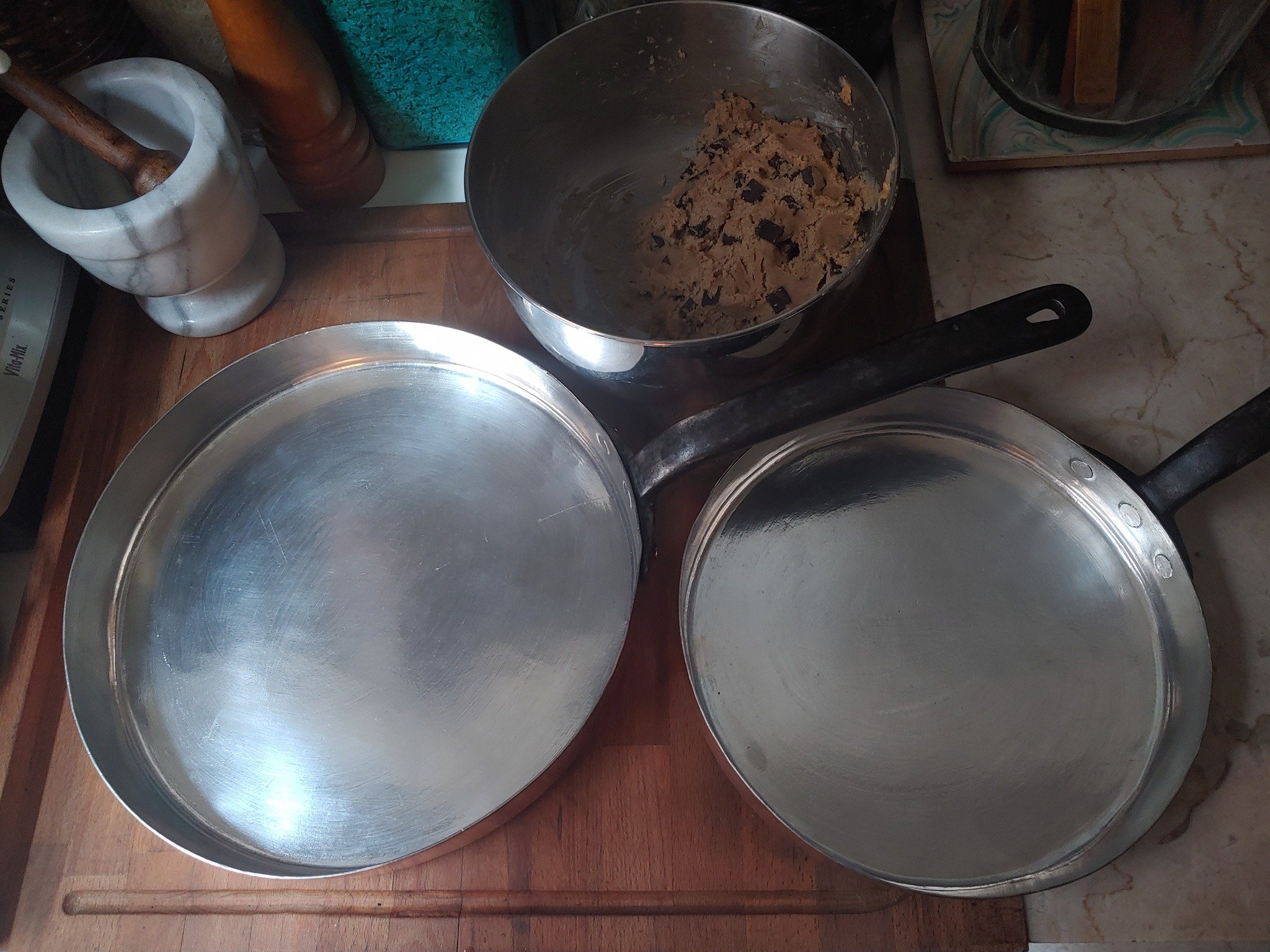
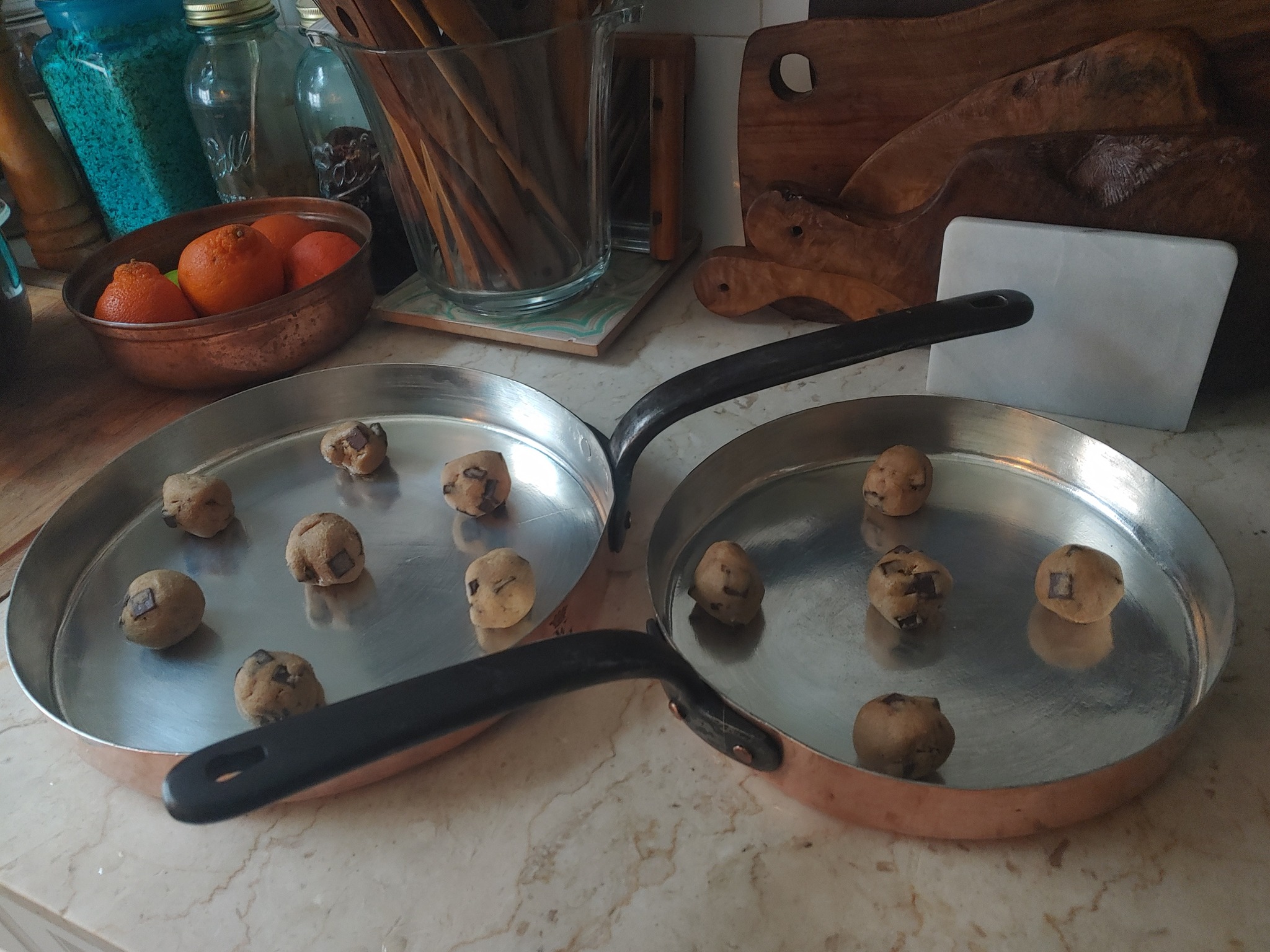
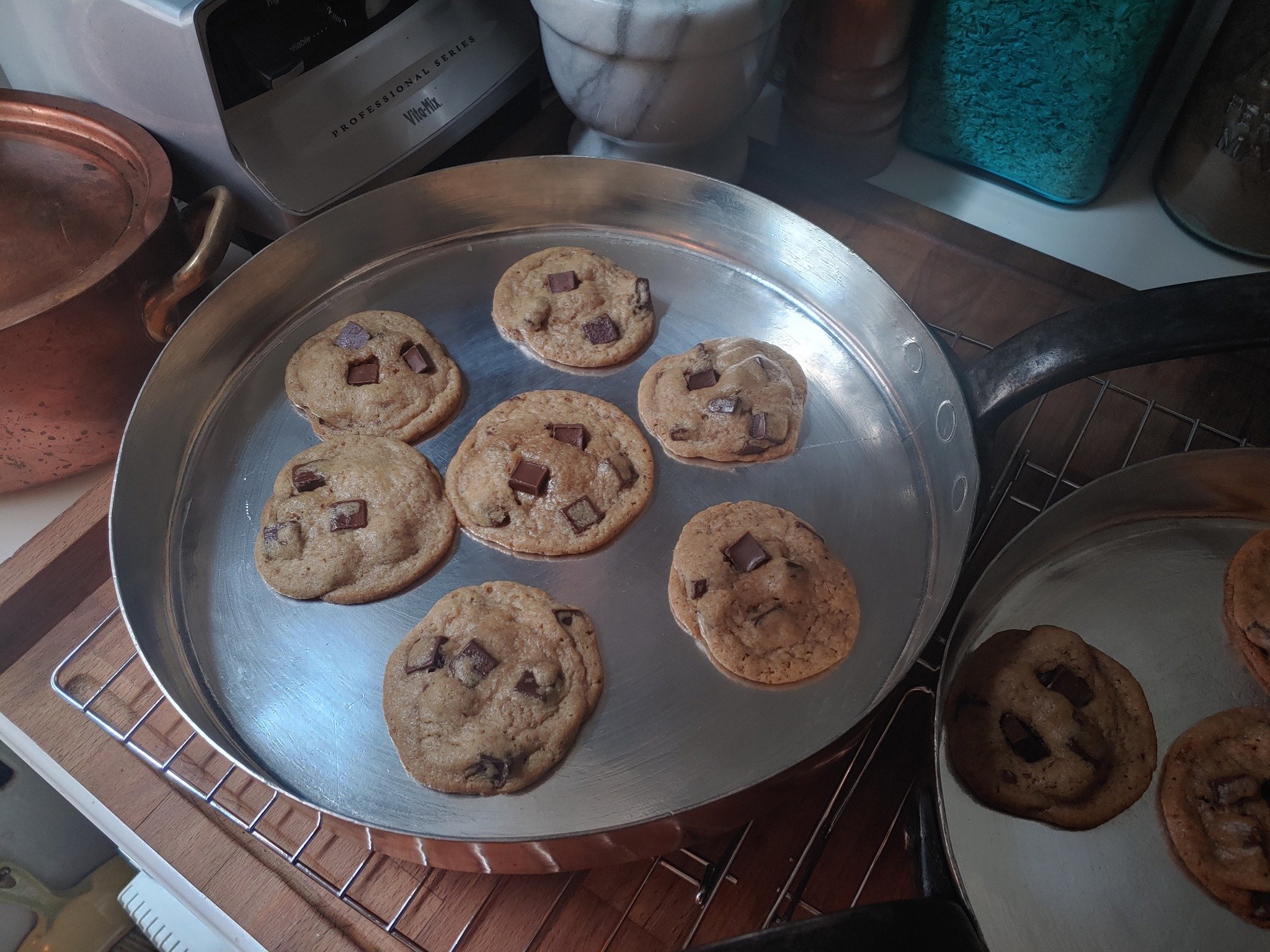

VFC says: Terina, these pans and your research into them are just marvelous. Thank you so much for sharing them with us!
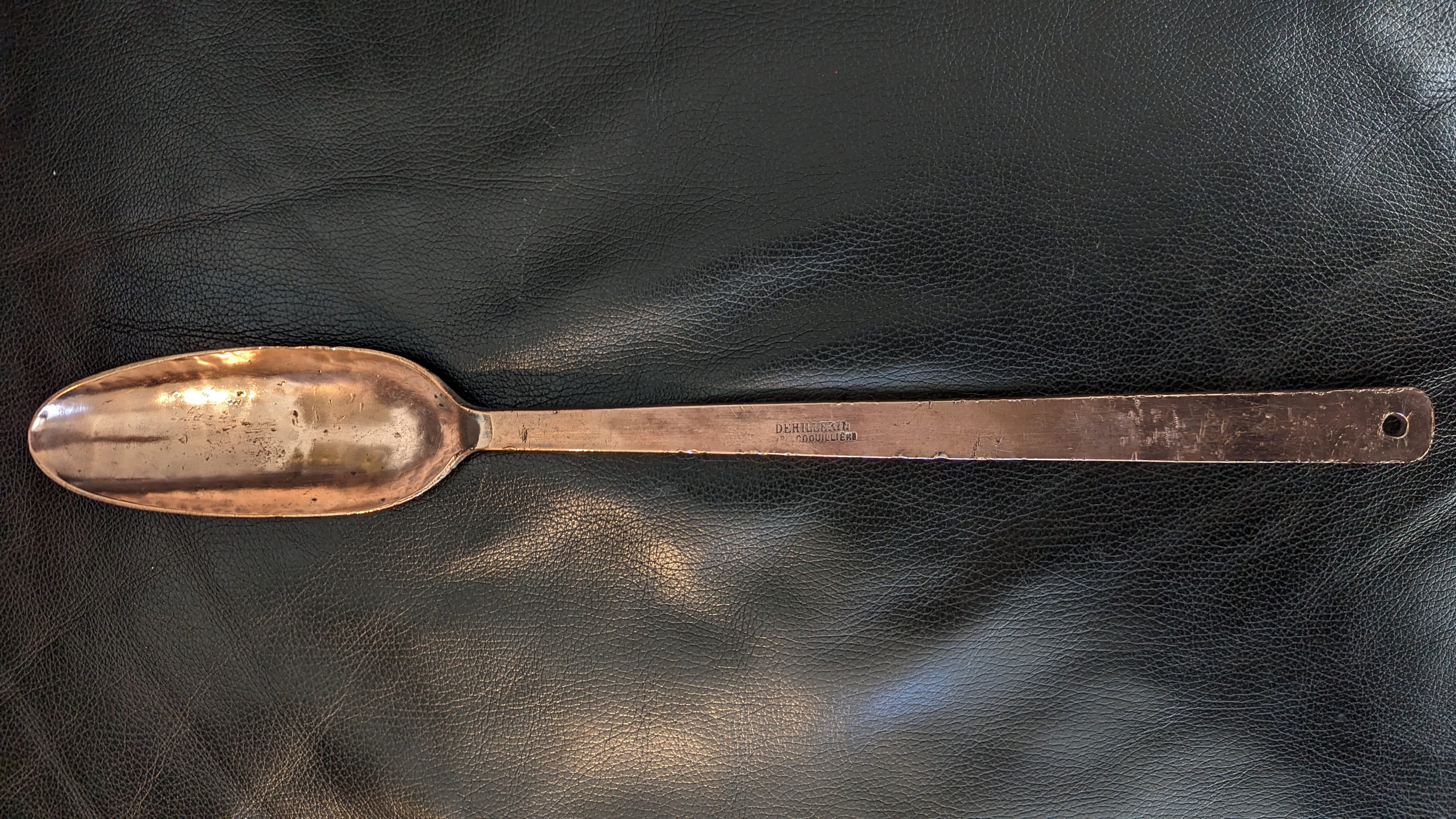

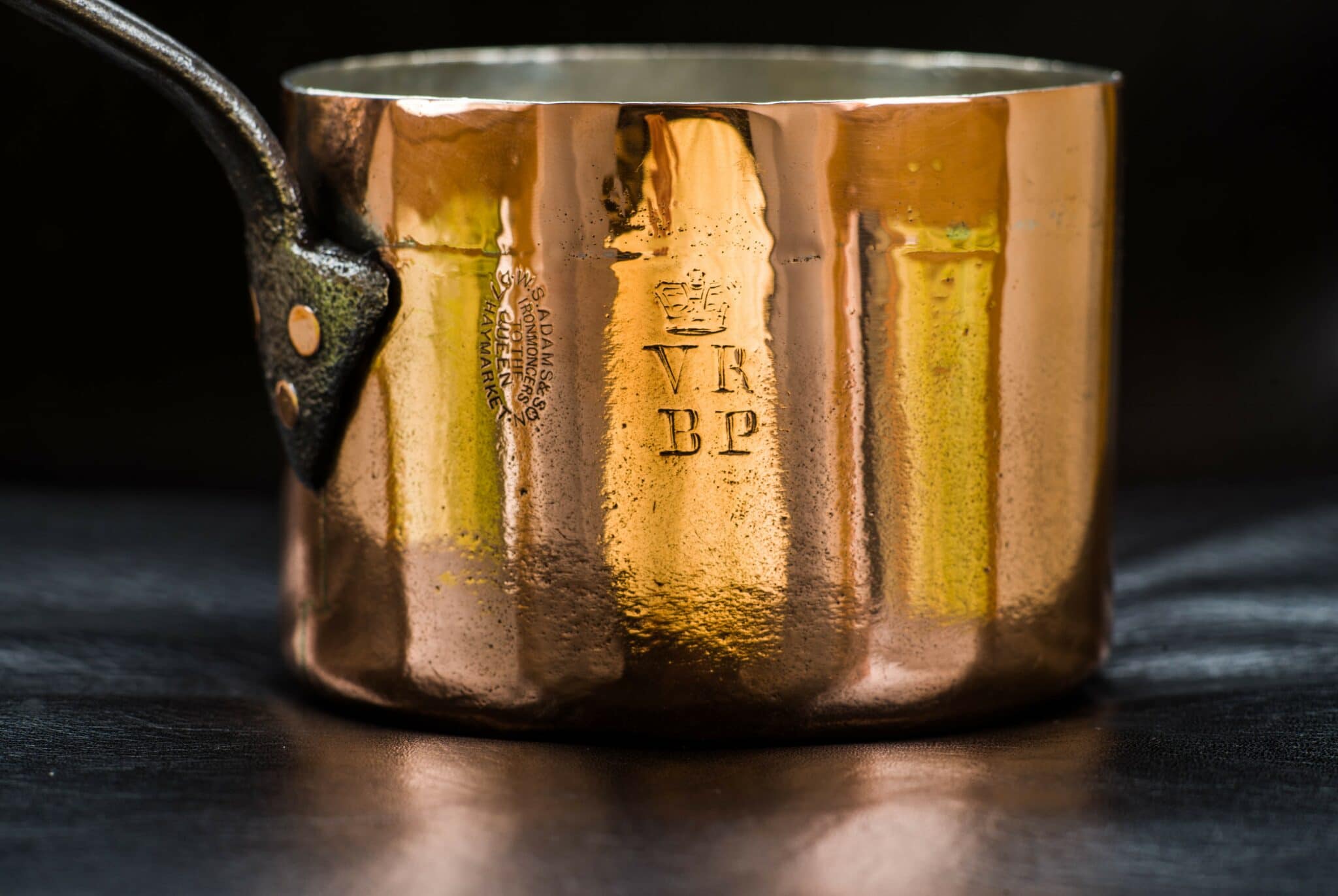

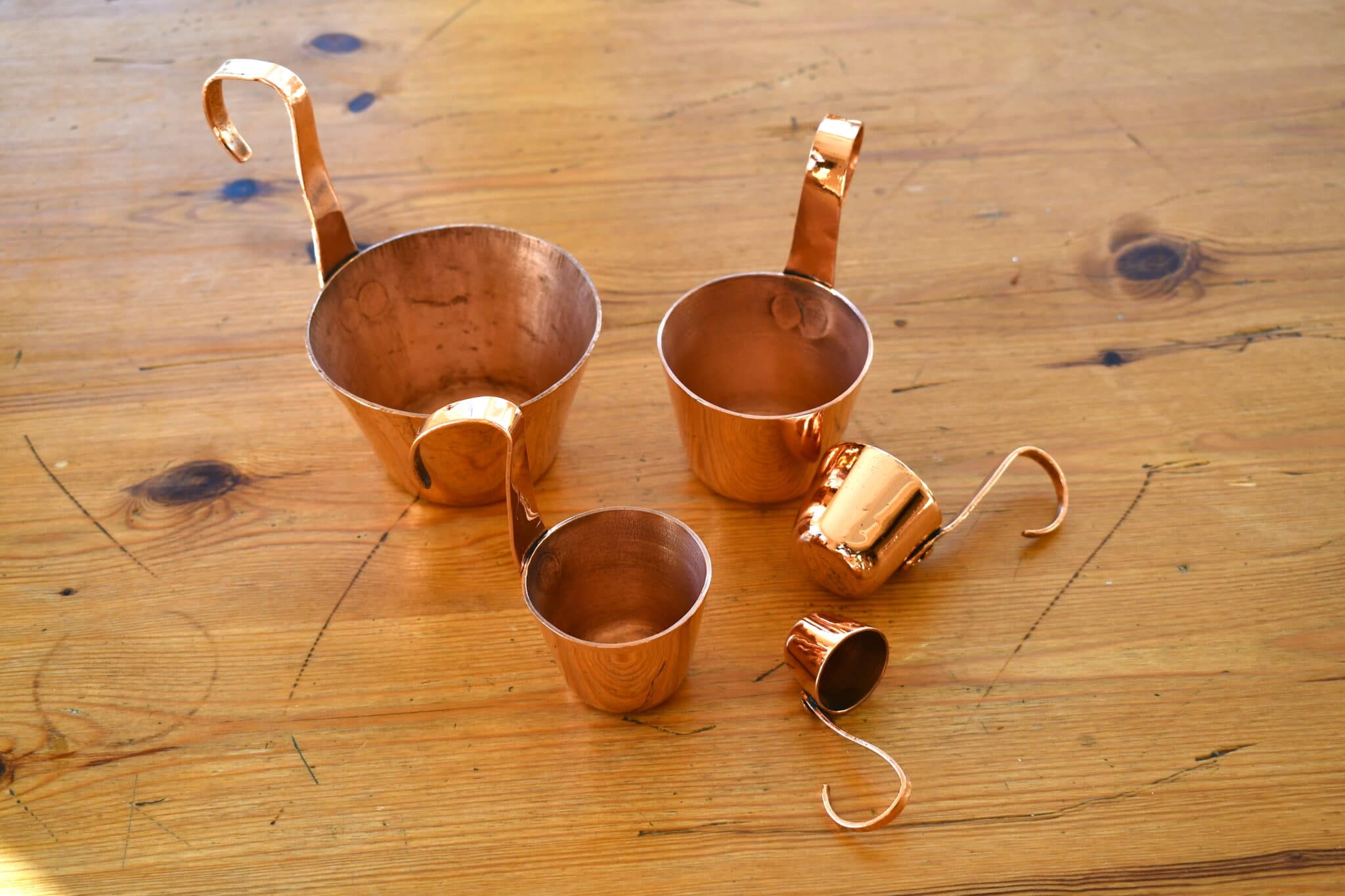
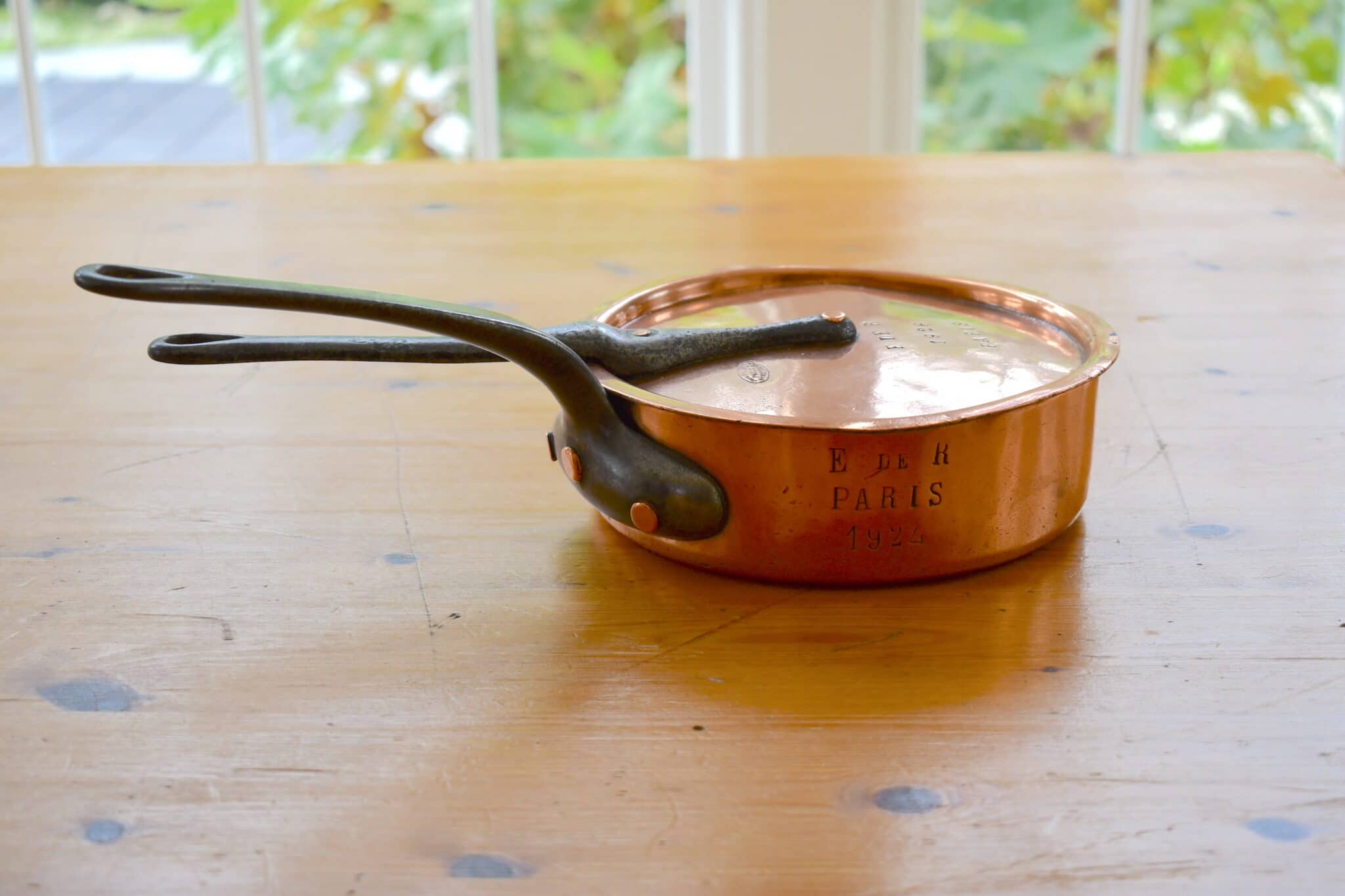
An adventurous and brilliant research amusingly told. Congratulations on your fine sleuthing and discovery! Thank you Terina for sharing it with us.
A few weeks ago, while researching the nobility of the United Kingdom and the court purveyors, I found this comprehensive book helpful:
“Debrett`s Illustrated Peerage and Baronetage of the United Kingdom of Great Britain and Ireland, 1884”.
Google can be used to find the entire text of about 800 pages. A standard work detailing the hierarchy of the British nobility. I had no idea how many nobles there were and how ramified their family trees were.
Really enjoyed reading this and sharing in the excitement of such a neat discovery. It’s always fun knowing that these historic treasures are out there, and congratulations on a really wonderful find.
I’m always on the lookout for these coronet marked pieces as well. I discovered a small pot cover at an estate sale years back with the markings M, L, and 8 under the crown. The cover is also stamped with W.J. Smith, I. Pont Street S.W.
In looking at it closer and comparing it to images in your article I realized it could also have a Westminster-Eaton connection. Your article has inspired me to do more investigating into this piece as well. I think finding out more about the story these old pieces tell is the most rewarding. Thanks for sharing your’s and I’ll share what information I find out as well.
Many thanks for this post, Terina: great finds, detective work and story! It also piqued my interest to re-examine a Victorian copper jelly mould I’d recently acquired but was yet to research. Your link to the University of Toronto Library cataloging British Armorial Bindings showed the coronet of an earl over the monogram S engraved on my item places it as previously in the household of the Earl of Spencer, probably the 4th Earl, Frederick (Princess Diana’s great-great grandfather).
Hi Matt, I wonder if the jelly mould you have came from the sale years back of some of the items from the Spencer’s Althorp estate. There was an attic sale (quite an attic I guess) as think ended up raising about 40 mil. There was a large quantity of “S” marked Spencer copper wares as part of the auction. I just read about it recently, and probably good didn’t see it at the time… would have been too many tempting things. Sounds like you got a wonderful item, with some neat history!!
Thank you very much for the additional information, Bill. Yes, that sounds a likely origin. I incidentally acquired it in Australia from a dealer who’d in turn purchased it at UK auction with a pair of heavy Georgian coffee pots. Sold trio to me for equivalent of under $US100 so I was doubly chuffed (as of course the only thing better than a great find is one procured for a bargain ;))
Whether hiking or looking for copper one should rather avoid the much traveled paths. So I found in Spain a small saucepan with royal insignia, which I could clearly assign to Queen Victoria (regency 1837-1901) and probably to the kitchen of Buckingham Palace. It was made by W. S. Adams & Son, ironmonger to the queen, 57 haymarket, London (1839-1880). The rather corroded saucepan has since been beautifully restored by Atelier du Cuivre, Villedieu-les-Poêles. Unfortunately, the craftsman was unable to reattach a tinned rim about 1.5 cm wide, as was traditional for many English pans.
What a wonderful discovery and it’s always fun to think where these unique items may turn up next. We’re off to Portugal for week, so will keep our eyes open!!!
What a great story told so well! You have a beautiful collection, and congrats on your new pair of ‘twin’ pans with so much history! I wish you and your family many happy baking and cooking days ahead with these beauties! 🙂
The large cook surface would be good for Lyonnaise Potatoes. Something to consider, pans with a large cook surface area to side wall height area have a higher potential for hot spots caused by the stove cooking surface.
To get the most out of these you may want to consider adding a cast iron plate above your burner of a diameter equal to or larger than your pan diameter–one can buy such a thing. But for my 32 cm pancake pan, I limit cookware diameters to 22 cm at most, typical large burner diameter is 20 cm.
These are my comments on the care of them, so you can get the most enjoyment.
Bob, since the cooking surfaces of my stove are too small for large diameter pans, I bought an appropriately sized 4mm thick copper disc. These discs are available in many sizes and thicknesses on ebay etc. As we know copper heats up particularly quickly this works quite well. By the way, also on an old classic electric cooker without glass ceramic cover. However, you have to be careful with the pans, otherwise the disc slips easily.
Thanks. I will check out these copper disks on Ebay. It was an idea I had long ago. My final solution was as your read, don’t go larger than 22cm.
Duparquet Copper Cookware offers square copper discs with a thickness of 3+mm as “heat diffuser”.
Hello Terina,
I came across this old auction listing and thought you would find it interesting since many of the pieces have the same coronet and markings as your pans. Some pretty impressive copper kitchenware.
Bill
https://www.christies.com/lot/lot-a-collection-of-copper-and-brass-kitchen-4346605/
Victorians were very serious about their Jell-O.